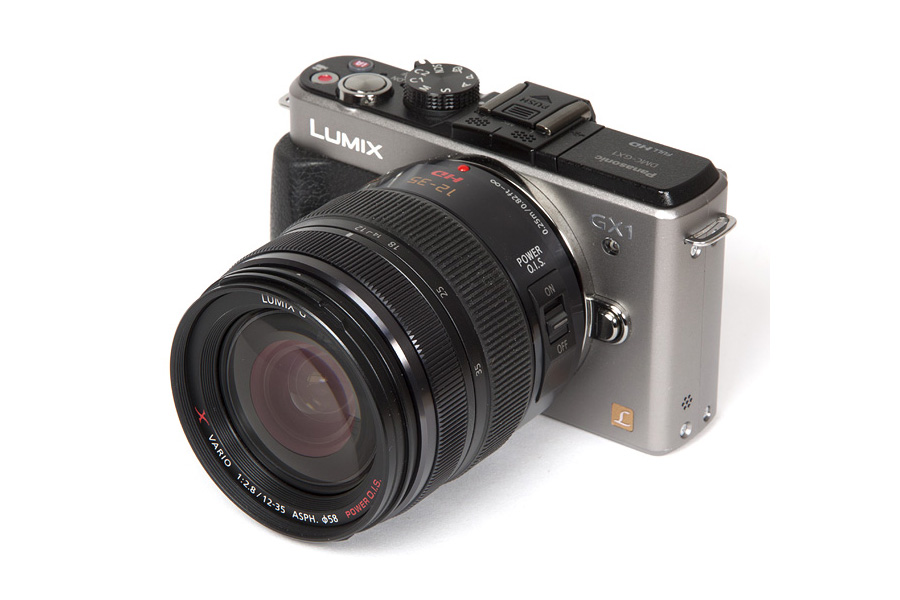
Micro-Four-Thirds (MFT) is undoubtedly the mirrorless system with the biggest footprint in the market today. However, so far the system focused primarily on consumer- and prosumer-grade products and ignored the professional arena but during the recent months we are seeing indications that this is going to change. Olympus released the popular OM-D camera and a high grade 75mm f/1.8 lens and Panasonic is also placing some bets into the higher end of the market.
In this review we’ll have a look at the Panasonic Lumix X 12-35mm f/2.8 ASPH Power OIS – the first fast standard zoom lens of the MFT system. In full format terms the field-of-view is equivalent to 24-70mm. While it is, of course, a f/2.8 lens regarding its speed potential, the depth-of-field capabilities are actually not quite as impressive. In MFT land you are “losing” about 2 f-stops here which obviously reduces the creative potential of the lens quite a bit.

The Panasonic lens is comparatively big within the MFT world but it’s still dwarfish compared to similar speed lenses from APS-C or full format systems. Size-wise it felt just right to me for sure. The build quality of the lens is also excellent. Panasonic used high quality materials and while the lens extends upon zooming towards the long end there’s no wobbling whatsoever. The lens is also dust-resistant and splash-proof. The two control rings operate smoothly. So we can positively confirm that it fulfills its professional-grade scope here.
The AF of the lens relies on a very fast and near-silent linear stepper motor. We had no issues with AF accuracy during our field tests with the lens. We believe that manual focusing is still by-wire but it doesn’t make any difference anymore in terms of feedback: we experienced no delay in the focus feedback. A good ol’ focus distance scale on the lens is missing though. The Panasonic lens features a “Power OIS” (Optical Image Stabilizer) which is good enough for an equivalent gain of about 3 f-stops.
| Specifications | |
|---|---|
| Equiv. focal length | 24-70 mm (full format equivalent) |
| Equiv. aperture | f/5.6 (full format equivalent, in terms of depth-of-field) |
| Optical construction | 14 elements in 9 groups inc. 4x aspherical, 2x UED, 1x UHR elements |
| Number of aperture blades | 7 (circular) |
| min. focus distance | 0.25 m |
| Dimensions (L x W) | 68 x 74 mm |
| Weight | 305 g |
| Filter size | 58 mm (non-rotating) |
| Hood | petal-shaped, bayonet mount, supplied |
| Other features | Nano-Coating, Power OIS, weather sealing |
Distortion
Traditionally this is a bit of a weak point of MFT lenses because the system relies on an auto-correction here and as such it isn’t really a design priority. You may argue, of course, that this is not relevant from a user perspective because all the applied corrections are done “under the hood”. This is also something that we can confirm – standard JPEGs or conventionally converted RAW files don’t show a significant amount of distortion throughout the zoom range.
That said it is still interesting to look a bit behind the scenes by using an “unsupported” RAW converter like e.g. RAW Therapee. This converter reveals the native barrel distortion level of about 5.8% at 12mm. This is excessive – and as such it is highly disappointing for such a lens. Please note that the correction of such an amount of distortion is lossy due to the required image stretching and interpolations.
Corrected:

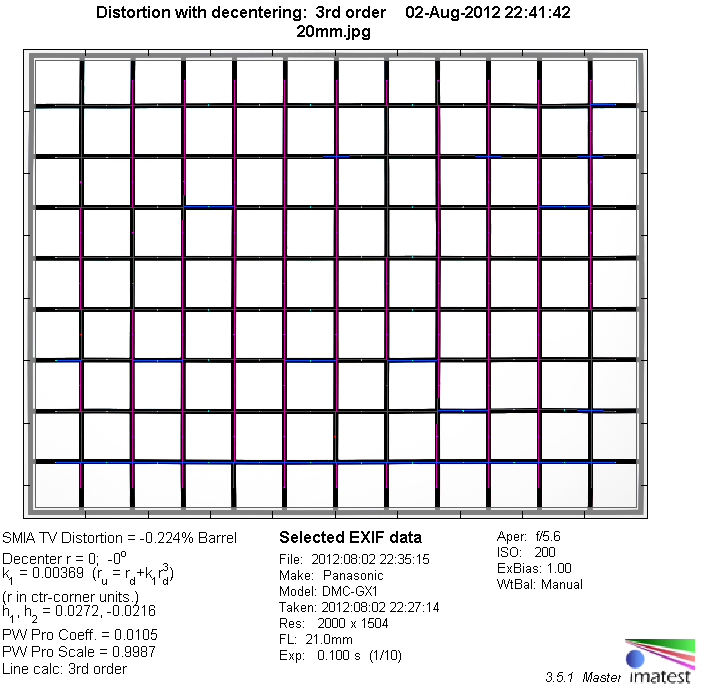

RAW:
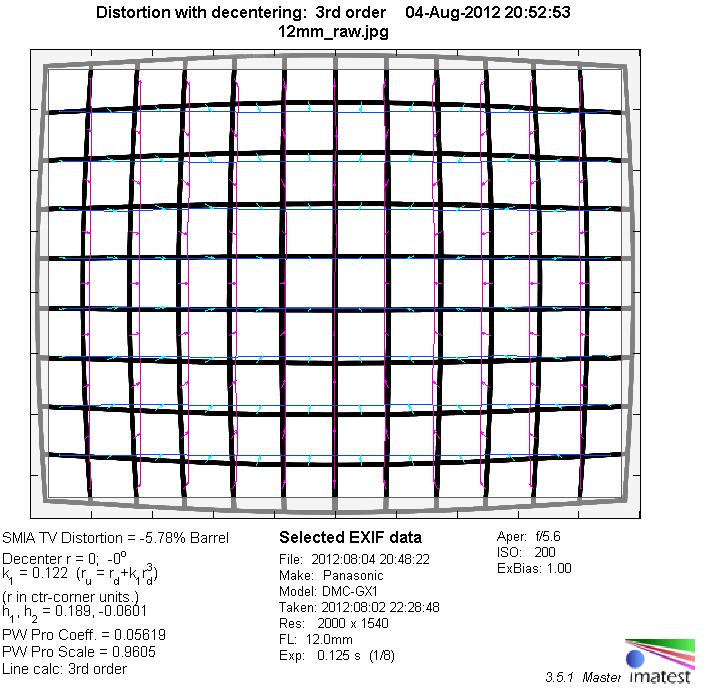
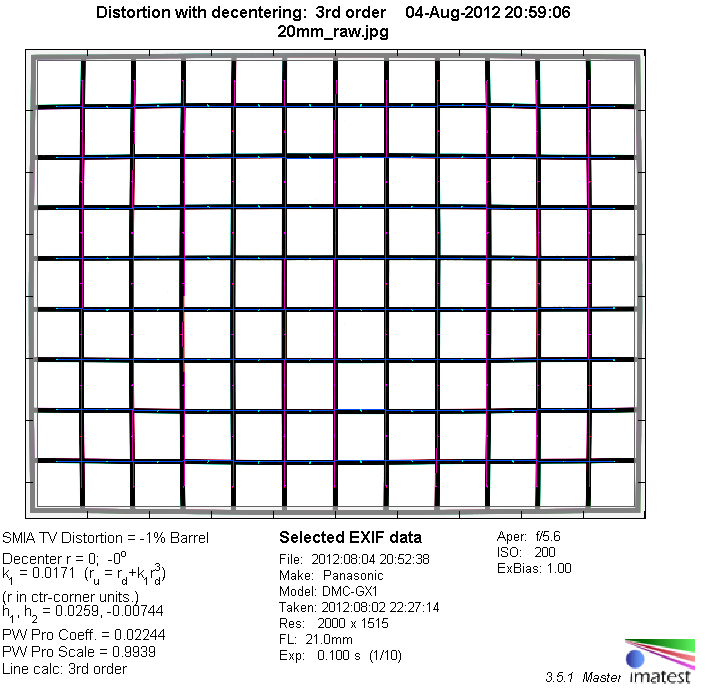

Vignetting
The vignetting characteristic of the lens isn’t overly impressive. There’s a high amount of light falloff specifically at 12mm and 35mm @ f/2.8. You have to close the aperture by about one f-stops to reduce the issue to an acceptable degree. The vignetting is less relevant in the middle range.
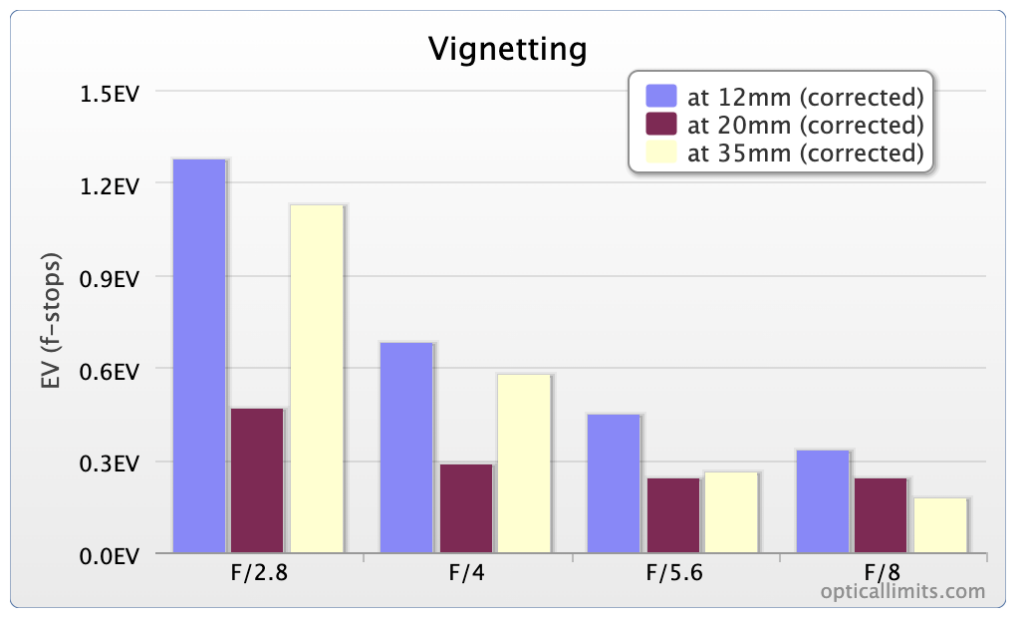
MTF (resolution)
Regarding all the high praise on the web we were excited to look into the resolution chapter. The Panasonic lens showed superb results in the center of the image frame. Everything is tack sharp here (=high contrast + high resolution) straight from f/2.8. However, things aren’t quite as breathtaking when looking at the border and corner performance at 12mm and 20mm. The image is still sharp (=good to very good) here – no doubts – but it’s actually nothing beyond the ordinary. However, the good news is that the performance is very good across the image at 35mm.
A nice aspect of the lens is the very low field curvature so you don’t have to stop down to improve the borders (except for increasing the depth-of-field, of course).
Note: You may be surprised about the “odd” MTF curve where the center performance starts to decrease straight after f/2.8 or f/4. Please note that this is a diffraction effect. It is actually typical to see a peak resolution (center) at such apertures on (micro-)four-thirds cameras.
Please note that the MTF results are not directly comparable across the different systems!
Below is a simplified summary of the formal findings. The chart shows line widths per picture height (LW/PH) which can be taken as a measure of sharpness. If you want to know more about the MTF50 figures you may check out the corresponding Imatest Explanations.

Chromatic Aberrations (CAs)
Lateral CAs (color shadows at the image borders) are also auto-corrected on Panasonic MFT cameras but NOT on Olympus MFT cameras. CA correction aren’t lossy so we welcome this feature and Panasonic users can happily ignore this chapter.
Not so Olympus users. Now you may expect that such a pricey lens is well corrected. However, while the issue isn’t quite as pronounced as on the PZ 14-42mm or Olympus’ 12-50mm it is far from being low. At 12mm you can easily spot some CAs with a pixel width of 1.5-2px at the image borders and it’s not much better at 20mm. This will be noticeable at times. The effect eases at 35mm.

Here’s a sample crop taken at 12mm which illustrates the issue:

Sample Images
I reckon that there'll be MFT users out there who will argue once more that we at OpticalLimits "hate MFT" (apply variations at will) but the truth is that two of the three team members (and that's me included) are using the system for our private photography and we are doing so because we think it's great and aligned with our other hobbies (like e.g. outdoors).
That said, we also have the obligation to rate lenses are neutral as possible and after all the hype around the Panasonic Lumix G X 12-35mm f/2.8 ASPH Power OIS we are simply a bit disappointed. The lens is, undoubtedly, a good one but not stellar. It is chili-sharp in the image center but the border region isn't quite on this level in the lower focal length range. At 35mm it is more impressive with very sharp results across the image field. While distortions are nothing to worry about from a user perspective, Panasonic relies on a very heavy auto-corrections at 12mm. The amount of vignetting is about average for a lens in this class with weak spots at the extreme ends of the range at fully open aperture. Panasonic cameras also care about the correction of lateral CAs but Olympus user will experience some higher than expected color shadows in their images. Due to the rather limited depth-of-field potential we didn't really look deeper into the quality of the bokeh. However, we pushed it a couple of times in our real world sample images (by taking close-ups at 35mm) and the bokeh looked very nice indeed and better than average for such a lens.
The build quality of the lens is fantastic and it was also a joy to use it in the real life thanks to a super-fast and silent AF and smooth zooming and focusing. Size- and weight-size it just feels right. We also appreciate the low-light capabilities thanks to the combination of high speed and image stabilization. That said we are still not convinced that the lens is really worth its very high price tag although there's no doubt that most users can get perfectly happy with it.
-
Optical Quality
-
Build Quality
-
Price / Performance

